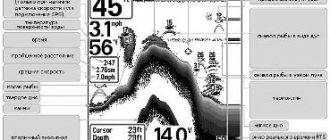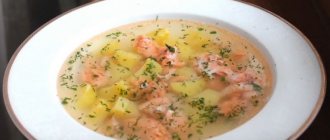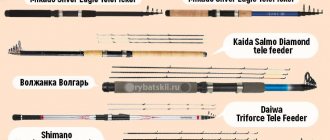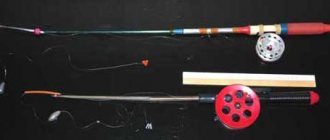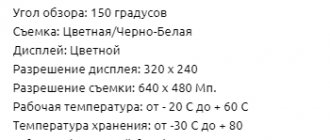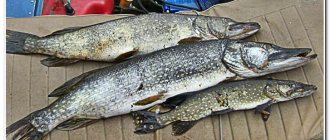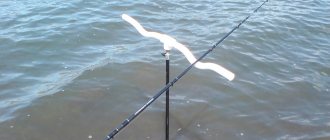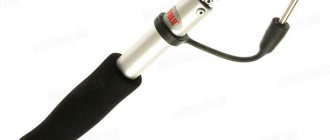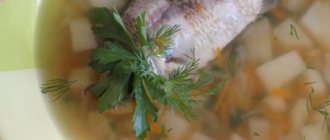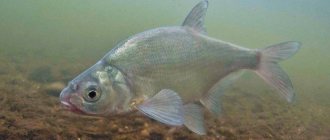Every experienced fisherman knows that the process of quiet hunting should be enjoyable. And this happens when there are all comfortable conditions for fishing.
It is difficult to hold a fishing rod in your hands for a long time. Therefore, many fishermen use rod stands.
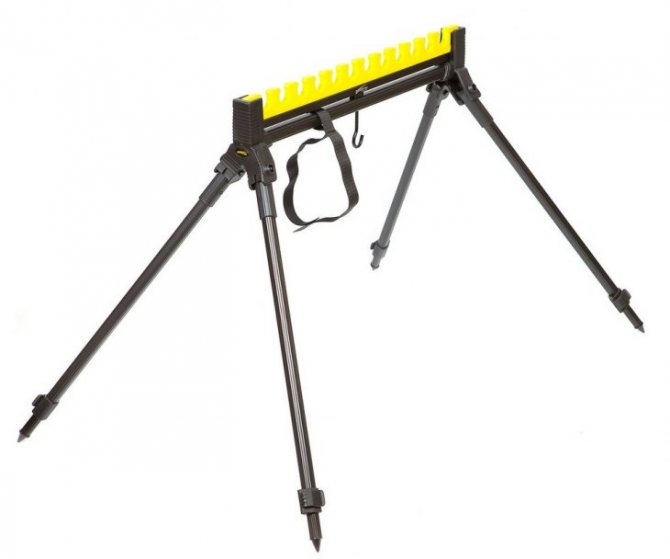
Stand for winter fishing rod
There are many types of rod stands. You need to choose them individually for each type of fishing. Donk stands are sold in stores. But most fishermen make stands for winter fishing rods themselves. This requires a little ingenuity and imagination.
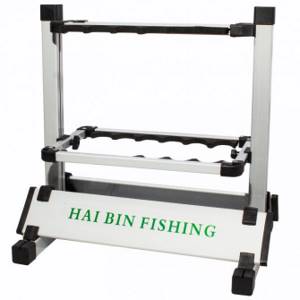
If you fish with one or two rods, then it is better to make separate stands. When there are a lot of rods, it is better to use special designs for a large number of fishing rods.
Homemade fishing rod stands
On the Internet you can find many photos of fishing rod stands. Fishermen share their experience and post drawings and diagrams of various supplies.
Read here Castmaster - techniques and methods of placing a spinner. Tips for choosing and features of spinners (125 photos)

There are very simple ones - from lids, jars and all sorts of useless things that came to hand. However, there are also worthy models. They are multi-level, foldable, with holders.
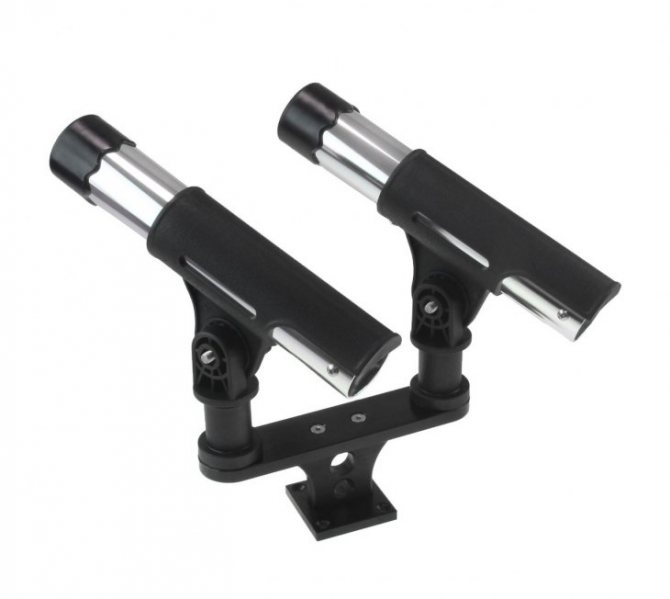
This model needs a little work. But the result will not keep you waiting. You will receive comfortable conditions for fishing.
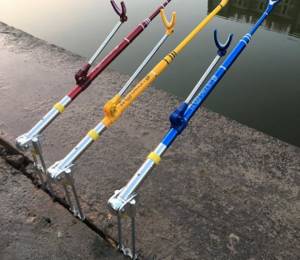
Which material to choose
At the preparatory stage, you should decide on the choice of material. Each material has characteristic features. It is important that it is resistant to frost and water. In this regard, it is better to choose:
- plastic, it is very convenient, any shape can be cut from plastic, the main thing is to achieve stability on an icy surface;
- polystyrene foam is an ideal option for making a stand, but in this case it will be necessary to make a reliable fastening for fixation on the ice;
- wood is the most reliable and sustainable option.
We recommend reading: Selecting and using a spinning rod for catching chub in various bodies of water
Making a fishing rod stand is a simple procedure. It can be made in a matter of minutes using available materials, the main thing is to show your imagination.
How to make a fishing rod stand
We will talk about a stand for winter fishing. To make a stand with your own hands, just take an old telescopic antenna. They come in different types: square, round, rectangular. It is enough to modify it slightly. And you can catch big fish in a warm tent.
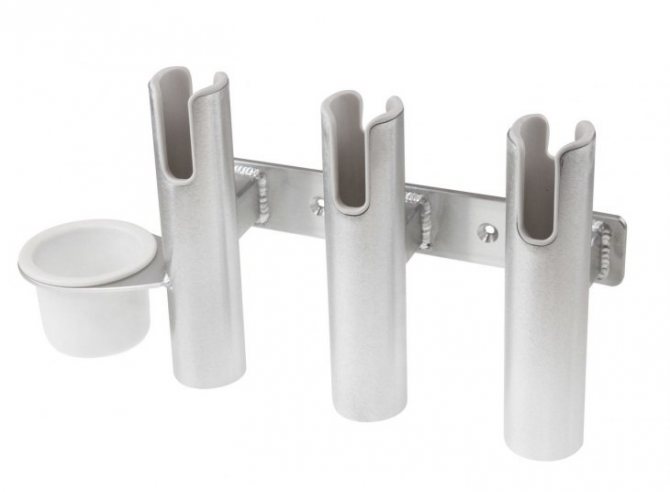
First, you need to saw off the edges of the antenna. Then you need to insert curved fishing rod holders into them. They are made from ordinary wire. Bend them any way you want.
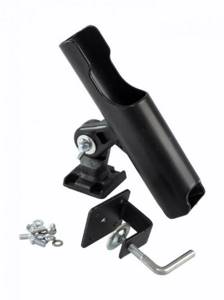
The main thing is that they are the right size for your donks. The holders must not rotate. A big plus in this design is the ability to adjust the holders at any time.

Thanks to telescopes, the donk can be placed at any height. This is very convenient at night. When you decide to lie down and rest.

Fishing rod stand for boat
There is a universal option for a stand for fishing rods on a boat. We will tell you about it now. Suitable for all types of boats. With the help of a clamp, it can be installed almost anywhere. This device can also be adapted for land-based fishing. First, let's prepare the clamp. Then we will make a holder.
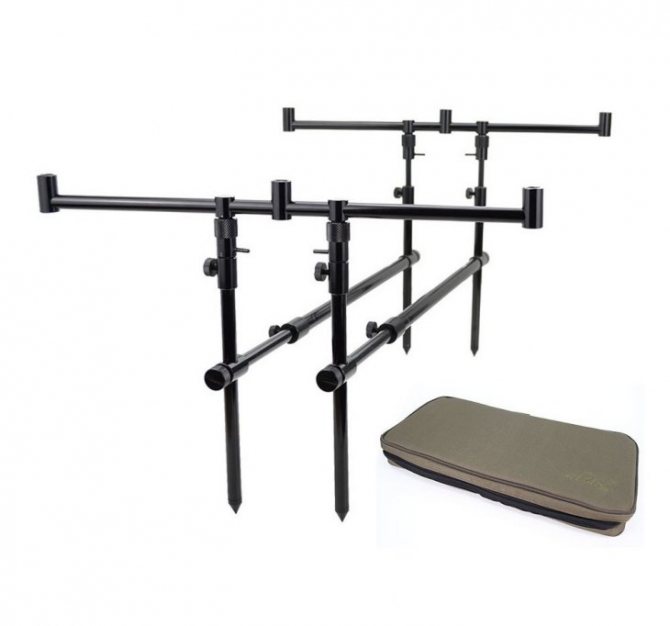
- You need to make a blank in the shape of the letter P. The width of the heels and legs is thirty cm.
- Then we drill a recess of ten millimeters. We cut the thread. An indentation is made in the lower heel.
- Lubricate everything with PVA glue. Pre-clean the sawdust.
- Then we repeat everything again.
- At the last stage, we check how the bolt is screwed in. It should hold the puck firmly.
- To make a holder, we need a duralumin channel. It is important to choose the right size.
- We make a hole in the pipe. It should be on top.
- We install a nut in the heel. Inserted from the inside.
- We attach a smaller piece of channel to the heel. Attached with a bolt. This part will move horizontally.
- We attach a long channel perpendicularly. It is secured with a bolt.
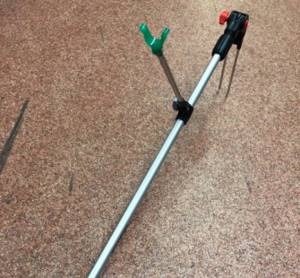
Important! The long channel must be attached with a pipe in advance. Close the end with a plug. This will prevent the spinning rod from slipping. We recommend covering the tube itself with a soft base. It will help not to spoil the spinning rod.
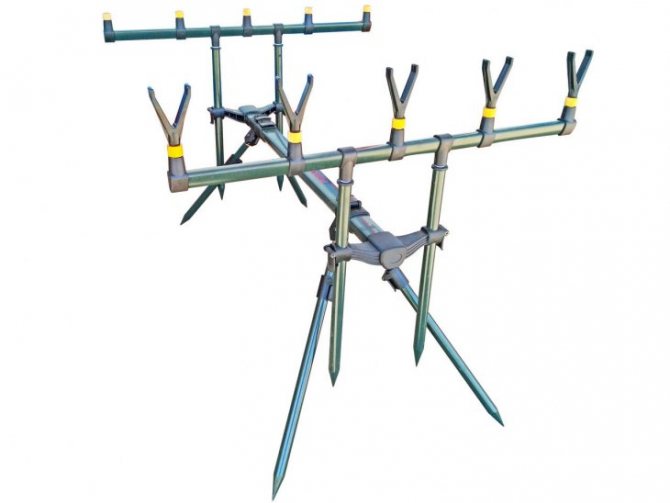
Types of feeder holders
Fishing with a feeder is considered a very popular area of modern fishing. More and more people are interested in this type of activity, buying expensive gear and accessories en masse. But without using a tripod for fishing, fishing with a feeder is very uncomfortable, because each fishing rod, especially if there are several of them, has an impressive weight and dimensions.
It is also not easy to detect in your hand a weak fish bite that occurs while it is playing with the bait. In turn, the holder designs have a fairly rigid fixation, which ensures maximum position stability in intense winds. In addition, the angler will be able to leave the fishing rod and walk along the shore, or explore other areas of the reservoir.
For fishing to be successful and comfortable, each stand must meet certain requirements:
- It should have an optimal height, since the fishing rod is placed at an angle of 45-50 degrees relative to the surface of the water.
- It can have various clamps with a U- or Y-shape. The main thing is that they have a smooth coating, since constant use increases the risk of scratches.
If low posts are used, the rod tip will be placed too low, which can lead to line drift when exposed to fast currents.
Among the existing types of holders, the following should be highlighted:
- Wooden pegs. They have a simple design and zero cost, because you don’t have to buy them in a store. You can find and plan a suitable product directly near the pond.
- Single stands made of metal. Purchasing such inventions eliminates the need to search for pegs.
- Butt holders. They are popular due to their ease of manufacture.
- Rod-pods. They are considered a universal solution for different fishing conditions.
- Stands that are installed on walkways.
- Universal rod holders.
To make a choice, you need to understand the features of each type in more detail.
Wooden rod stands
In most cases, fishermen use the classic version of a stand in the form of wooden stags driven into the ground. This is not surprising, because they can be made immediately after arriving at a body of water, provided that there is coastal vegetation there. The rod is cut out of wood and then installed in the ground. Of course, not all fishermen agree to kill nearby bushes and trees, disturbing the local ecosystem, and a sharp peg can damage expensive gear when performing aggressive hooking. If we talk about the advantages of this option, they are presented as follows:
- You don’t have to constantly transport the stands, because they are made directly on the pond, which frees up additional usable space in your backpack or car trunk.
- Wooden pegs are available almost everywhere and do not require much effort or time to make them, which is very convenient.
- There are no additional costs because this stand costs nothing.
- You can choose the appropriate length of the stand yourself.
However, besides the advantages, wooden inventions also have disadvantages..
It is no secret that not all bodies of water have trees or bushes from which a stand can be made. And in their absence, fishing will be uncomfortable and problematic. In addition, one cannot ignore the fact that the number of fishermen is constantly growing, so cutting vegetation causes serious damage to the ecosystem. However, many of them use last year’s flyers, which lie in large numbers on the shore.
Rod racks
Another popular type is the design, which is made on the basis of thick racks. They are fixed directly on the shore, after which they are connected by a double crossbar. Thus, the angler can use up to two fishing rods at the same time. If we are talking about feeder fishing, then it is advisable to use a single version made of stainless steel or aluminum.
The fact is that such designs are very convenient and suitable for fishing at different points. To give the mechanism increased stability, it is better to fix the racks in pairs : one to the top of the fishing rod, and the second to its base. If the soil is quite dense, then screw-in products can be used.
As for ordinary stands, they are simply driven into the ground, but only with a rubber mallet, because other methods can scare the fish or even damage the fishing equipment. If we talk about the advantages of racks, they look like this:
- With the help of these devices, you can point both fishing rods in the direction of casting the equipment, which will significantly improve the sensitivity of the tip of the tackle.
- The likelihood of the lines of both rods interfering is minimal, because the posts are located at a considerable distance from each other.
- The racks are quite compact in size and can easily fit into a bag with other equipment.
The only disadvantage is the inability to use it on a hard surface. That is, if fishing is carried out on a rocky shore or hard surface, then such stands are useless.
Butt type stands
Modern fishermen are rapidly changing their preferences , abandoning classic products in favor of something more modernized. And when choosing stands, many of them give preference to butt holders, which are easy to manufacture and affordable. Such designs are capable of holding the feeder form by the handle, so they are especially effective when it is necessary to install feeder forms in one position. The tip is used as a bite indicator.
The advantages of butt holders are:
- Increased reliability, which does not change even with intense exposure to wind.
- Ease of use, not only when fishing, but also when monitoring the tackle during a bite.
- Ease of manufacture and ergonomics. The products take up very little space, so they can easily fit into a suitcase with other fishing tools or in the trunk of a car.
The only disadvantages that stand out are the limitations in terms of installation due to the nature of the soil, as well as the difficulty of detecting a bite in strong gusts of wind.
Modern rod-pod
If for some reason the fishing takes place on a hard bank, for example, when it is strewn with stones, or you are placed on a wooden platform, then it is advisable to use a completely different type of holder, called a rod-pod.
At its core, a rod-pod is a multifunctional stand that can be used for feeder, spinning, and float fishing, regardless of the type of shore surface.
There is no need to drive the posts into the ground, because the design is a connection of the front and rear posts by means of crossbars with inserts for three or four fishing rods.
In addition to the designs themselves, anglers recommend purchasing a bite indicator, or making one yourself, as well as a folding chair.
When choosing a modern tripod , you need to consider several important recommendations:
- If the emphasis is on stability, then it is better to use stands with a tripod, since their center of gravity is located at the point where the tripod connects to the crossbar. Options with vertical posts are not so stable, so they have to be additionally weighted using various stabilizers.
- The number of adjustments determines the comfort of use and functionality of the stand. The most necessary adjustments are to change the distance between the crossbars, the height of the racks, the level of inclination, etc. It is important that the structure is quickly assembled and disassembled, and that the kit includes a cover or bag for carrying.
The advantages of such modern products include:
- Universal purpose. They can be used for fishing on any shore surface (sand, pebbles, concrete and others).
- The presence of several holders makes the fishing process as comfortable and successful as possible.
- If you equip the structure with alarms, then they will all be placed in one place, which will significantly simplify the process of monitoring the bite.
- The racks and crossbars are made of light alloys, so there is no inconvenience during their transportation.
As for the disadvantages, they are practically absent, with the exception of the increased likelihood of fishing lines sticking due to their close proximity to each other.
